READY TO GET STARTED?
REQUEST A FREE ESTIMATE
Fill out the form below or call (888) 466-7849 for a free, no-obligation estimate.
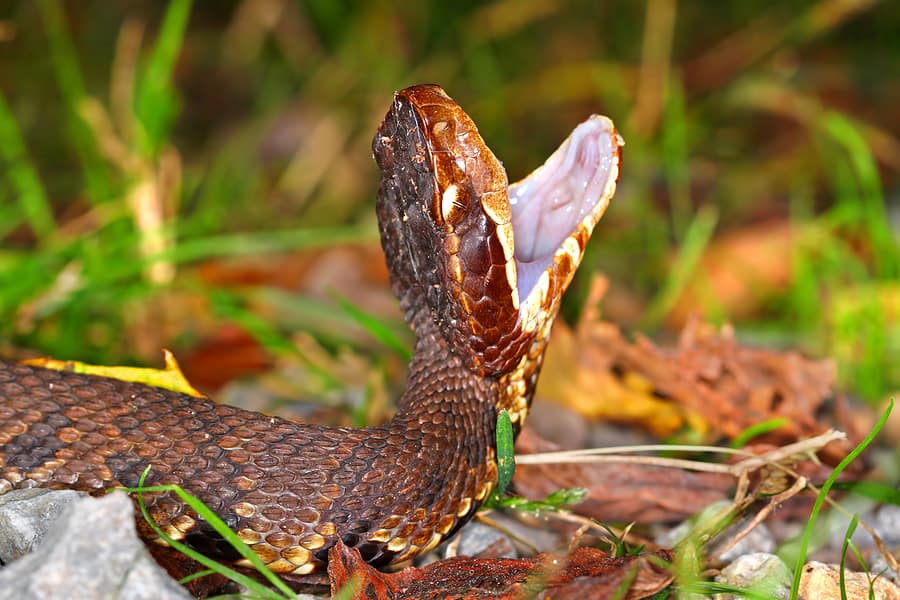
Despite popular belief, not all snakes are harmful to humans. In fact, most snakes will go out of their way to avoid humans when they encounter them. Only a handful of venomous snakes reside in Georgia. One of the most common of these is the water moccasin.
Water moccasins, also known as cottonmouths, is a venomous snake found throughout the southeastern United States. They are known as the cottonmouth because of the white coloring on the inside of their mouths that show when they are threatened. These snakes are usually a banded brown or yellow color. They range in size anywhere from 2 to 4 feet and can swim in the water and slither on land.
The bite of a water moccasin is very dangerous to humans. If you are bitten by a water moccasin, seek medical attention immediately. Symptoms following a water moccasin bite include pain, swelling, discoloration, weakness, fatigue, difficulty breathing, nausea, and decreased blood pressure.
Adult water moccasins have control over their venom. Because they have a limited supply, they have learned to conserve it, sometimes biting with a “dry bite” where no venom is released. Although painful, these bites aren’t as dangerous as a venom-filled bite. This is also what makes baby and juvenile water moccasins so dangerous. These young snakes haven’t learned control over their venom yet, therefore injecting their full supply when they bite.
If you encounter a water moccasin or any other snake you can’t positively identify in the wild, steer clear of it and don’t enter it’s personal space. Don’t attempt to move it or kill it. If you come across one of these snakes in your home, contact a professional for safe removal and relocation.
Although most snakes are actually beneficial to have around your home, you can prevent snakes with the following tips:
If you encounter a snake, contact a local pest control company who can implement safe and humane snake removal protocols.
Roof Rats: How To Identify and Eliminate
Common Rodents to Lookout for this Winter
Getting Ready for Spring Lawn Care
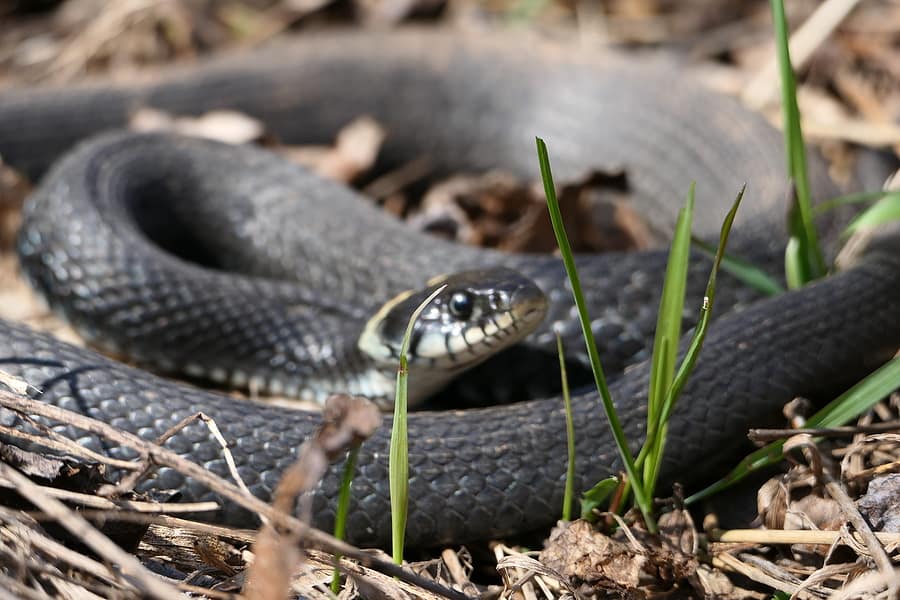
As the season shifts from summer to early fall, cooler weather is around the corner. Many pests begin the hustle and bustle of preparing for winter – scavenging and storing food, finding a place to hibernate, or making their way into your home to overwinter. This time of year sees an increase in one pest in particular – snakes! Fall is a time for high snake activity and encounters with humans become more common.
There are many reasons snake control is important in the fall. As the leaves begin to change colors to red, orange, and brown and fall to the ground, they provide the ideal camouflage for snakes. Fall is also the time snakes begin to prepare for brumation and/or hibernation. Most snake species breed in the spring and eggs are hatched by the time autumn rolls around. These juvenile snakes are curious and more likely to be seen by humans. There are 6 venomous snake species in the southeastern United States and each of them actually breed in the fall. This means this time of year males will be actively seeking females to breed with, increasing your chance of an encounter with them. Overdevelopment in many areas has also depleted the natural habitats of many snakes, also increasing their chances of encounters with humans.
Because we see such an increase in snake activity during the fall, snake control becomes much more important. Here are some of our favorite snake prevention tips you can utilize this snake season.
Are Mosquitoes Still Active in the Fall?
What Attracts Centipedes To Your Home?
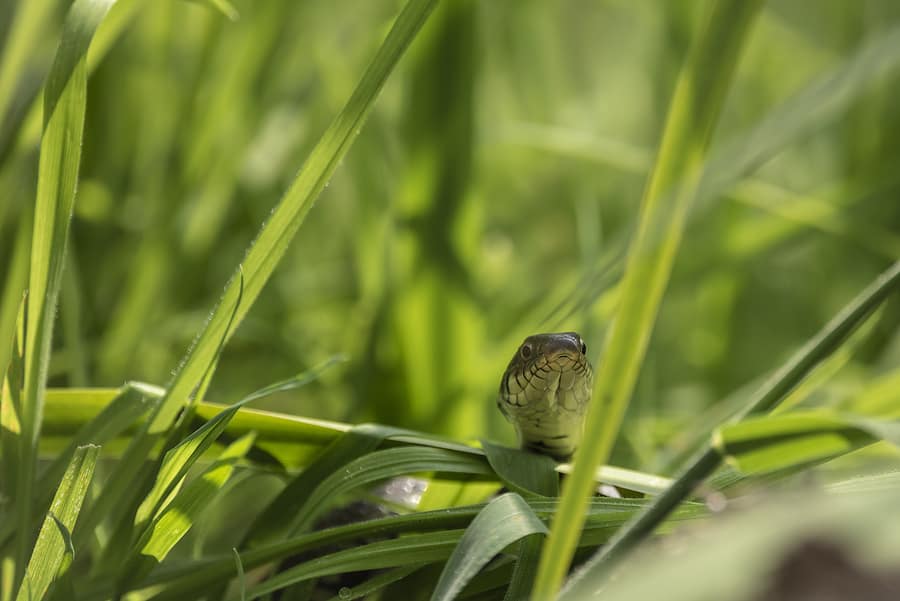
While most snakes you encounter are harmless, many of us still don’t want to come across one in our yard or home. While our first instinct may be to run, most snakes are actually beneficial to have around – they help keep other pest populations under control (rodents, frogs, etc.).
Snakes will come into your yard in search of 2 things: shelter and food. Snakes will seek out shelter to have a place to rest, breed, and hunt. Common places snakes are found include overgrown grass, dense brush or shrubs, leaf piles, rock piles, compost, or areas with moisture like underneath bird baths, around leaky faucets and hoses, or near ponds or swimming pools. Snakes will also come looking for food. Snakes love to eat rodents, moles, frogs, fish, snails/slugs, and other small insects.
If you prefer not to encounter snakes around your home, here are 7 natural ways you can keep snakes away.
Snakes will come around looking for food so if your home provides them with that, you’ll be more likely to encounter them. Getting rid of these food sources will encourage snakes to move along in search of something to eat. Make sure common pests that snakes like to eat are kept under control. Scheduling routine pest control can help with this.
Snakes are also attracted to areas with a lot of moisture. Eliminate standing water in your yard where possible. Repair leaky faucets and replace leaky hoses. Keep pools, ponds, and other water features maintained. If using sprinklers, make sure they are running in the morning so the water has time to soak in or evaporate before it gets dark. This helps keep soil in your yard from being too wet.
Snakes will look for places around your home to hide so they can breed and rest. Get rid of coiled hoses or use hose boxes. Avoid using rock piles in your landscaping, if possible. Store firewood in boxes or elevate it when possible. Keep your grass mowed and dense brush cleared out. Seal off or add fencing to any open areas under sheds or other buildings. If you are using snake-proof fencing, make sure it is made of steel mesh or plastic sheeting, it is at least 3 feet high and 4 feet deep, it is flush with the ground, and it is angled outward.
Some plants are known to repel snakes. Try to incorporate these plants into your landscape design where possible. Common snake-repelling plants include marigolds, lemongrass, Mother-in-Law’s tongue, wormwood, onion, and garlic.
Gophers, moles, and voles dig burrows across your yard. Once they’ve been eliminated, these old gopher holes and burrows can remain on your property. Snakes will commonly use them for shelter as they provide a great place for them to hide, rest, and breed. Fill in any of these holes and burrows with dirt or gravel. This will help deter snakes from using them.
Snakes have a few natural predators that can help keep them away. Common snake predators include cats, raccoons, pigs, turkeys, guinea hens, and foxes. Keeping any of these animals around your home will help deter snakes from coming near. You can also buy fox urine and sprinkle it around your property to help deter snakes, as well.
There are several natural products that are known to repel snakes. These natural snake repellents can be used around the perimeter of your property, around pools, along the edges of ponds, and anywhere else you have noticed snake activity.
Despite our best efforts, snakes can still make their way into our yards and homes. If you have a problem with snakes, contact your local pest control company who specializes in snake removal who can help you properly identify the type of snake you have (venomous vs nonvenomous) and help safely and humanely remove it from your property.
How Do Cockroaches Get Into the House?
Identify and Prevent Brown Recluse in Your Tennessee Home
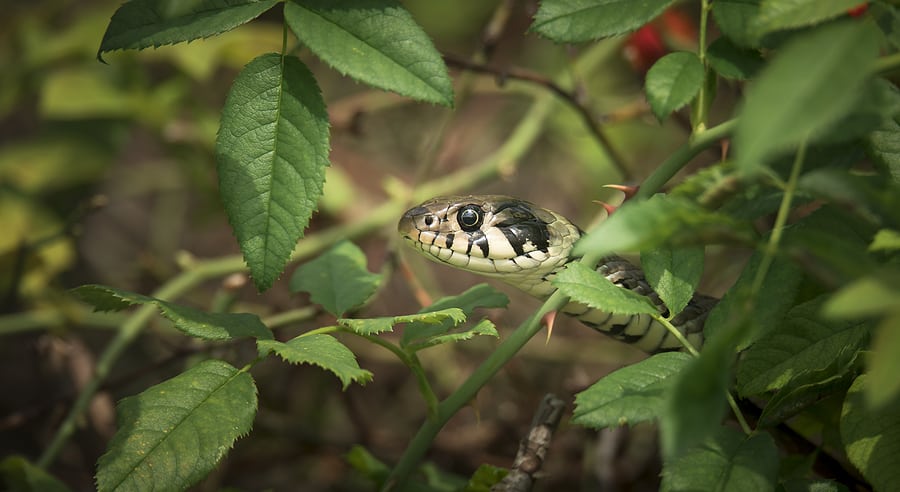
With warm weather here to stay in the South, snakes are out in full force. Spring marks the beginning of snake season as they emerge from their winter dens in search of food. While most snakes are harmless (there are only a few venomous snake species in Georgia), it can be disconcerting to come across one in your yard.
What many homeowners don’t realize is that they could be inadvertently attracting snakes to their property. Here are some of the most common things that attract snakes to your yard along with some ways to prevent them.
Snakes typically eat a few times per week when food sources are available. While their diet varies by species, most snakes feed on small rodents (like mice) and birds. Having an abundance of these favorite foods around your home will draw snakes to your yard.
Snakes need water to survive. Some species even thrive in wet environments. Common water sources include rain puddles, water features, birdbaths, pools, and ponds/lakes.
Snakes will seek shelter wherever they can find it. Tall grass and overgrown shrubs provide the perfect cover for snakes from predators and also allows them to camouflage themselves when sneaking up on their prey.
Snakes are coldblooded and prefer to spend most of their time when not hunting in cool, dark, humid environments. This keeps them from overheating and allows them to cool off after a hunt. Snakes can often be found hiding in wood piles, bushes, garages, and sheds.
Most snakes aren’t harmful to humans and, in fact, can be beneficial to have around as they help keep other pest populations under control. If you have a problem with snakes, contact your local pest control company for a snake removal and prevention plan that best suits your situation.
How to Avoid Stinging Insects at Home
How Fast Do Termite Treatments Work?
What Types of Grasses Work for My Georgia Lawn?
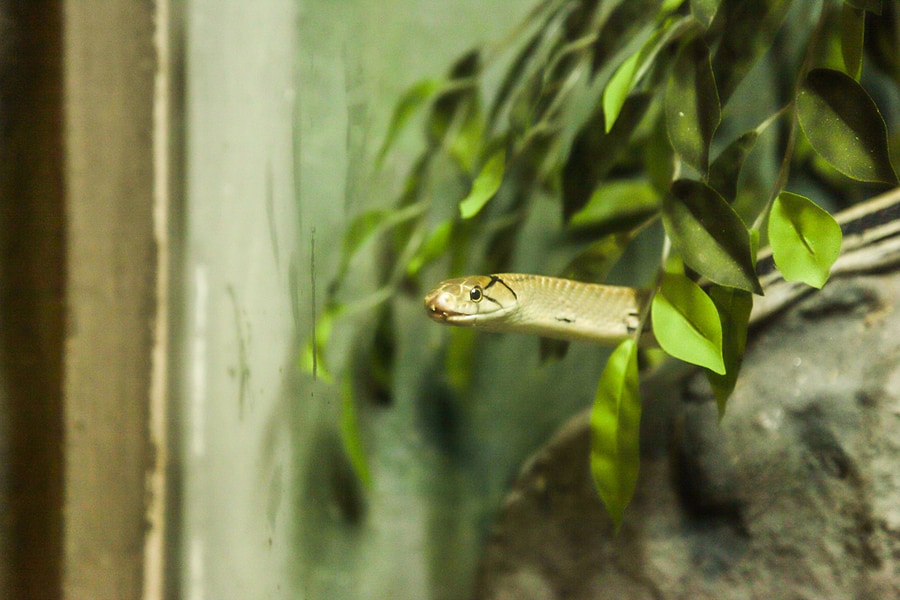
Although many people don’t welcome the sight of a snake in their yard, they are actually quite beneficial to have around. Snakes eat mice, grubs, slugs, and other insects around your home and are also a source of food for birds of prey like hawks. While most species of snakes are non-venomous, there are a few types of snakes that are venomous in our area. For this reason, you should never handle a snake unless you are 100% sure you know what species it is. Most snakes will bite when harassed whether they are venomous or not.
There are many natural snake repellent methods out there today with one of the most common being mothballs. But are they really effective? According to experts at the Blue Ridge Poison Center the answer is a resounding NO. Mothballs are made of either naphthalene or paradicholorbenzene. Both of these chemicals are hazardous to both humans and animals if exposed to or ingested. The chemical makeup of each of these substances allow them to turn into gas when they are exposed to the air – resulting in the strong smell we usually associate with mothballs. These fumes can cause dizziness and irritation to the eyes and the lungs. If ingested, mothballs can cause a condition called hemolytic anemia which is very dangerous. Mothballs also resemble candy to young children, making them more likely to pick them up and handle or eat them.
So if mothballs aren’t the answer, how can you get rid of snakes? Here are a few snake prevention tips you can use safely around your home.
If you have a problem with snakes or other wildlife, contact your local pest control company who can help identify pest attractants, points of entry, and provide you with safe and humane snake removal services.
Fleas & Ticks: What’s the Difference?
Bed Bugs: Where Do They Come From?